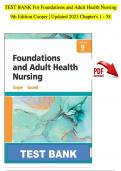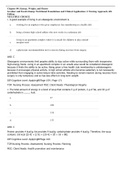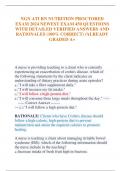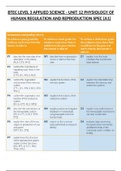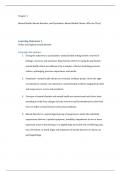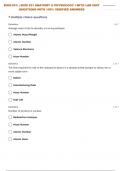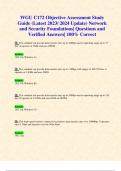Exam (elaborations)
Test Bank for Foundations and Adult Health Nursing, 9th Edition by Cooper, Chapters 1 - 58 > Download as a Pdf File <
******** INSTANT DOWNLOAD AS PDF FILE ******** Test Bank for Foundations and Adult Health Nursing, 9th Edition by Cooper, Chapters 1 - 58 > Download as a Pdf File < 1. Test bank questions for Foundations and Adult Health Nursing 9th Edition Cooper 2. Cooper's Foundations and Adult Health...
[Show more]
